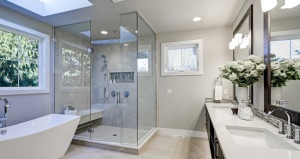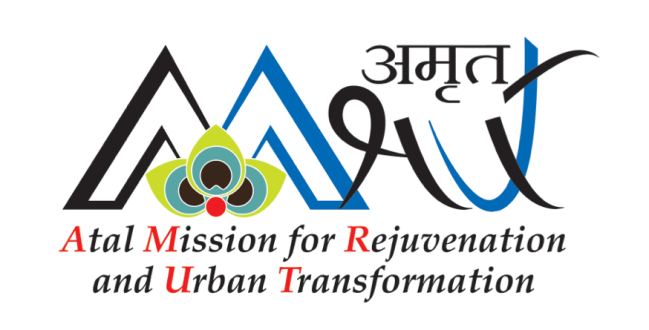MHADA Lottery Scheme 2020 Mumbai
About MHADA Board
Housing is the most important aspect of human life, all of our efforts and all of our govt’s efforts are Housing for All by 2022”. Every year, the MHADA has plans to unveil several lottery schemes under the MHADA Lottery Scheme 2020 to provide affordable housing options to the homeless population of the state. Under the govt’s ambitious housing scheme, the Pradhan Mantri Awas Yojana (PMAY). MHADA will offer affordable housing options in different cities of the state. This housing scheme is available for residents of Mumbai only. The process of the scheme will start at the beginning of the year 2020. Interested applicants can apply online for this lottery scheme.
MHADA Lottery Scheme 2020
MHADA, established in 1948, is a housing scheme released by the Housing and Area Development Authority, Government of Maharashtra for the people of the state. Desired applicants can apply for the scheme under four categories economically weaker section, lower-income group (LIG), Middle-income group (MIG) and High-income group (HIG) category. Registration of flat will be done by online & offline both process. We are sharing some important information and dates about the Mhada Pune Lottery scheme 2020.
What are the objectives of MHADA Lottery 2020?
The main purpose of this MHADA housing scheme 2020 is to give housing to economically backward, poor people at affordable rates. The central government is bound to offer housing for All by 2022, for which the center is providing housing to the urban poorer under the Pradhan Mantri Awas Yojana (PMAY).
What is the MHADA Lottery Scheme?
MHADA first came up with a low-cost housing scheme in 2012, under a lottery system for 2593 apartments in Mumbai. Since then, in subsequent, it has announced similar lottery schemes, like the MHADA Lottery 2017 Mumbai and more recently as well.
Types of Lottery under MHADA:
- Mumbai Board MHADA Lottery 2020
- Pune Board MHADA Lottery Scheme 2020
- MHADA Housing Scheme Konkan Board
- Amravati Board MHADA Housing Scheme
- Nashik Board MHADA Housing Scheme Draw
- Nagpur Board MHADA Housing Scheme Draw
- MHADA Housing Scheme Draw For Aurangabad Board
MHADA Pune lottery 2020: Important dates, Information
Name: Mhada Lottery
- Location: Pune
- Department: Maharashtra Housing and Area Department Authority (MHADA)
- Launched By: Maharashtra Government
- The commencement date of the application: Announced soon
- Last date of application: Announced soon
- Application Mode: Online
- Scheme Type: State Government Scheme
- Official Website: lottery.mhada.gov.in
Procedure: Important Date
- Online Application (Last Date): 10 December 2019
- Online payment (Last Date): 10 December 2019
- List of accepted applications: 16 December 2019
- Draw Date: Update Soon
- The applicant can check the result of winner list Mhada Lottery Pune 2019- Click Here
Read this also- MHADA Lottery 2019-20: Results Declared for Pune Board Lottery
Types of lottery schemes under MHADA
|
Categories |
No of units |
Flat price |
|
EWS |
63 |
Under Rs 20L |
|
LIG |
126 |
Rs 20L to 30L |
|
MIG |
201 |
Rs 35L to 60L |
|
HIG |
194 |
Rs 60L to 5.8 Cr |
Location wise flat details
|
Location |
No of Flats/Houses |
|
Antop Hills |
278 |
|
Pratiksha Nagar |
89 |
|
Gavanpada Mulund |
269 |
|
Mankhurd |
316 |
|
Siddharth Nagar Goregaon West |
24 |
MHADA Pune Lottery Scheme 2020 Online application
The office has announced the lottery scheme to provide for under budget housing in Pune. Mhada. Registration for the scheme has started online soon. for check yourself click HERE. Applicants can apply for this till the first 3 months of 2020, and all important dates announced soon.
MHADA Pune Lottery Scheme 2020: Eligibility Criteria
To check your eligibility criteria for MHADA Lottery Scheme 2020, you must fulfill all the below-mentioned criteria:-
- The age of the applicants must be above 18 years.
- A Certificate of Domicile.
- If the applicant’s monthly income is between Rs 25001-50000. He can apply for LIG flats.
- If the applicant’s monthly income is between Rs 50001-75000. He can apply for MIG flats.
- If the applicant’s monthly income is between Rs 75000 or above. He can also apply for MIG flats.
Allotted Flat types and Categories
|
Categories |
Allotted Flats |
|
For EWS |
63 |
|
For LIG |
126 |
|
For MIG |
201 |
|
For HIG |
194 |
Applicant’s Monthly Income
|
Categories |
Monthly Income |
|
LIG |
Rs 25001-50000 |
|
MIG |
Rs 50001-75000 |
|
HIG |
Rs 75000 or above |
How to apply for the MHADA housing scheme 2020?
You can apply for the MHADA Housing Scheme 2020 in 5 simple steps whose mention below.
- Visit the MHADA official website
- Click on Register
- Fill the form with your details
- Create the Login user name and password
- Click on Submit
MHADA Housing Scheme 2020: Documents required
If you participate in the Mhada Housing Scheme 2020, you must have the below-mentioned documents list:
- Domicile certificate
- School leaving certificate
- Passport
- Birth certificate
- Driving license
- Voter ID card
- Aadhaar card
- PAN card
Recent Projects under MHADA
The Housing Projects are coming on the following given locations:
- Sahakar Nagar Chembur
- Shastri Nagar
- Chandivali
- Powai
- Ashokvan
MHADA lottery Pune 2020 Important Contact details
Mhada Lottery Helpline Number- 9869988000, 022- 26592692, 022- 26592693
For more details click on the website (lottery.mhada.gov.in)
Can the Applicant sell the MHADA flats Pune?
Yes, an applicant who will win the MHADA flats can sell their flat after 6-years of purchase.
What is the procedure to seek application for MHADA Housing Scheme 2020?
Procedure to seek application for MHADA Housing Scheme 2020:
- Visit the official website of MHADA (https://lottery.mhada.gov.in/)
- Register urself and create an account
- Enter all the details with the mobile no and generate OTP
- Verify your mobile no to confirm your registration
- Now select the MHADA Lottery Scheme for which you want to apply
- Fill the details appear on the screen with all the required details
- Upload the documents as listed above in JPEG format
- Submit the application form and make online payment
How to check the MHADA Lottery Result online?
Procedure to check MHADA Lottery Result 2020:
- Visit the official website of MHADA (https://lottery.mhada.gov.in/)
- Under the Homepage, click the “Lottery Result” option
- Click view option
- Again click view option as per your scheme code and category
- A PDF file will appear on the screen with winner name and flat number
What is the procedure to check the MHADA Lottery waitlist?
- Visit the official website of MHADA (https://lottery.mhada.gov.in/)
- Under the Homepage, click the “Lottery Result” option
- Click view option
- Scroll the page and waitlist will show after winner list
- Again click view option as per your scheme code and category
- A PDF file will appear on the screen with winner name and flat number
MHADA Lottery 2020 Refund Policy
For unsuccessful applicants, the authority will initiate the refund process within 7 working days of the draw date. In the case of the Pune Board Scheme, MHADA will start refunding application money to all the unsuccessful candidates of the housing scheme from 20th November 2019 onwards. And the process may run till the end of the month.
How to check the MHADA Lottery refund status?
- To check MHADA Lottery refund status:
- Visit the MHADA official website (https://lottery.mhada.gov.in/)
- Furnish certain details like application number or year of the lottery
- After entering the correct details, you will be redirected to a page having a section where you can check the refund status.
Image Source: Addressofchoice





